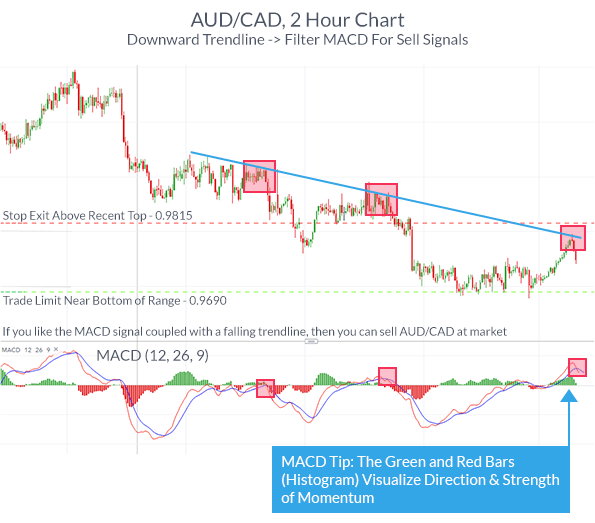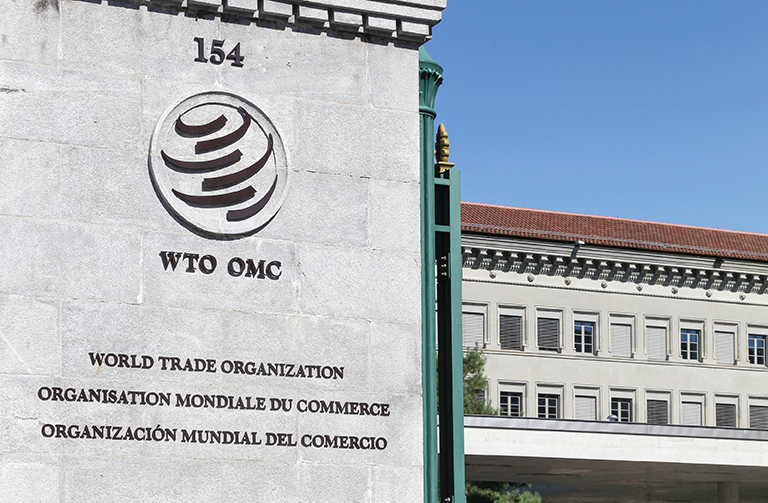Association of Mutual Funds in India
Contents:


Maintaining proper records of the investors, entry and exit fees of the portfolio assets, customer support, etc. can be categorized under the maintenance costs of a mutual fund. Workings of a mutual fund are complex, with numerous factors playing a significant role in behind its successful performance. Complete information about these costs and its breakups are released to the investors, to ensure transparency. These charges are revealed via a statement every 6 months, depicting the amount deducted from the account of the investors to meet these costs. The kind of securities held in a scheme’s portfolio are determined by the investment objective of the scheme.

When it comes to expense ratios, there are several misconceptions out there that need to be clarified. At the end of the day, suppose the value of the portfolio goes to 1050 crores (a 5% appreciation). A 5 percent return after 2 percent TER can affect the ending value of the investment considerably over a long investment horizon. Lower Expense Ratio is always favorable but aligning of investment is important.
Thats also a view but then that would be like measuring profits of a co on the assets in this case the AUM . Measuring profits on AUM is not an indicator of profits as they are not assets in the traditional sense i.e. the fund house doesn’t own the AUM. So you pay 1/365th of expense ratio each day and then NAV is published. One of my friend invested in this scheme on 2009 for 3 years with one time investment Rs .
Is there any relationship between size of the fund and expense ratio? I have taken the CAGR before expense ratio , Agree that there can be some mismatch, but hte idea was to give a overall picture and keep it simple so that people can understand it , didnt wanted to go in deep maths . Even reliance and uti have 2 funds each with same criteria i.e. all things being identical only inception date is different. I am new to the mutual fund and have question regarding Mutual fund. The smaller fund may need to charge more to break even, but as it expands, it may be able to lower its expense ratio to a comparable price.
Expense Ratio Implications
Like that even Reliance and UTi has 2 each of their pharma funds. The only difference was the inception date rest everything being identical. Yes your understanding is correct, if you can still pay to agent, if he is helping you with the overall decision making and if you feel that his inputs adds value to your financial life. For instance, Birla Sun Life Advantage Fund, which is one of the costliest and was launched in February 1995, has given a return of 19% beating its benchmark, BSE Sensex, by a margin of 8%.
In order to manage a mutual fund scheme, there are various expenses or costs that an Asset Management Company incurs. All these costs contribute to the fund’s expenses and are charged to the investor as a Total Expense Ratio or Expense Ratio that is disclosed on a daily basis. Since the expenses of equity funds are more than those of debt funds, the expense ratio on equity funds is greater. As per the regulations of the Securities and Exchange Board of India , a mutual fund can charge a maximum expense of 2.5 per cent , 2.25 per cent , 1.5 per cent and 0.75 per cent .
Components of Expense Ratio
Also, the above example u have show is for “ONE TIME” investment. Its really nice article as it will help us in doing wise investment. You have to see macro picture first….rest of the details does not impact much. As per FP all funds need to be review minimum 3 year duration. We have to look at what the promoter has invested and what they are making out of it i.e. If expense ratio reduce or cut then no way to do business for Fund house.
The key thing to note here is that the comparison we made earlier between two funds with the same portfolios would be very valid for comparing the direct and regular plan variants of the SAME scheme. Which means, when an investor invests in the direct plan of a scheme for the same period of time as another investor who invests in the regular plan, the direct plan investor will, by design, make higher returns than the regular plan investor. Simply put, the expense ratios of direct plans are lower than those of regular plans. And this difference is directly attributable to the fee that goes to the distributor that facilitates the transaction for you. TER is significant when the fund is being assessed for long-term investment.
For more details on this, please refer to this article on choosing between direct and regular plans. Of course, the point also to note here is that we have very artificially created two funds with the same portfolio that returns similarly every year. There is one more wrinkle to how expense ratios are specified.
ETF Expense Ratios: Everything You Need to Know – etf.com
ETF Expense Ratios: Everything You Need to Know.
Posted: Tue, 31 Jan 2023 21:50:11 GMT [source]
Mutual funds which have lower ratio who have trained professionals as a part of their team can yield higher return as well. Suppose if you have invested Rs. 50,000 in a fund that has an expense ratio of 2%, that means you need to Rs. 1000 to the fund house to manage your investments. Of course, the return earned on the above investments by the fund house has to be more in order for you to not lose any money. Yes, every investment done in Mutual fund has an expense ratio. The percentage of the charges might vary from company to company depending upon the nature of the fund . Expense Ratio has impact on the debt funds because debt funds returns are comparatively lower and deducting the expenses from the returns will be an additional burden.
Your continued use of the facilities on this Website constitutes acceptance of the changes and an Agreement to be bound by Terms of Use, as amended. You can review the most current version of the Terms of Use at any time, by clicking the Terms & Conditions link on the Website. No fee of whatsoever nature is to be charged for the use of this Website. Simply put, you must pay close attention to the applicable expense ratio before plunging into an investment fund as it is easy to miss.
What is expense ratio in ETFs?
I was very surprised to see the figures over the long is expense ratio charged every yearm, how the expense ration can take a hit on my funds. I am investing for a very long term and I am happy as long as my funds generate @ 15% per year. Similarly you talked about losing those percentage, if you compare the similar expense ratio of HDFC Top 200 and Reliance Growth fund both have launched in the same period . HDFC Top 200 has got the highest brand equity than any other fund in MF industry as of now and every investor would like to have one fund in HDFC Top 200 before considering any other fund. It was an excellent article and a real eye-opener for people who often get misled about which fund has given more returns, regardless of the charges that will reduce the final returns of the funds. I believe people should be given knowledge on the fund charges and how it would impact their final return, rather than trying to sell the product to people who are less literate about such minor details.
The Asset Management Companies charge a certain percentage of fees to managing your Mutual Funds. The fund house charges investors for managing the fund, maintaining the portfolio, and making crucial decisions regarding the investment. Apart from this, the Asset Management Companies also charge fees for running the fund, promoting it and distributing it. The mutual fund expense ratio is the annual fee charged by exchange-traded funds or mutual fund firms.
- Just because an expense ratio is 2.5% doesn’t mean the fund manager is looting you or 1% means that he is god.
- Fund Manager Expenses – An expert in the given asset class is employed by the Asset Management Company , who along with his team of analysts and researchers, help find the best securities to invest the money of the mutual fund in.
- The expense ratio is the percentage that denotes the amount of money you are paying to the AMC as a fee to manage your investments.
- We’ll look at the charging mechanism in detail later in the article.
Any Grievances related the aforesaid brokerage scheme will not be entertained on exchange platform. We collect, retain, and use your contact information for legitimate business purposes only, to contact you and to provide you information & latest updates regarding our products & services. We do not sell or rent your contact information to third parties.
Administrative Expenses
Since G-secs are issued by the government, they are considered safe as far as default risk is concerned i.e. the chances of the borrower or issuer failing to pay its obligations is remote. When a Mutual Fund scheme declares dividend, the NAV of the scheme falls to the extent the amount of dividend was declared on the next business day, when the units of the scheme are available for trading in the market. The day when the NAV of the scheme falls by the same amount as the amount of dividend declared or capital gain distributed to investors, is called the Ex-Dividend Date. Thank you for your clearing misconception about expense ratio. It will help ignorent investors to understand that expense ratio is not a thief that steals away long term gains.Funds are not selected using just one or two criteria. One must have skills to understand which combination will help him to select the best suitable fund as per his requirement.
Conversely, an increase in expense ratio can make investors feel cheated as the amount of return is reduced. Let us take a mutual fund expense ratio calculation example for Axis Bluechip Fund to understand the impact of the expense ratio on the returns. The investment objective of ABC Fund is to provide growth of capital plus regular dividend through a diversified portfolio of equities, fixed income securities and money market instruments. The only way an investor in a growth plan can realise profit is to sell his/her investment in the scheme.
What is a mutual fund Expense Ratio?
Clicking “I Agree” to “Terms & Conditions”, shall be considered as your electronic acceptance of this Agreement under Information Technology Act 2000. Please read these Terms and Conditions (“Terms of Use”) carefully. Your Acceptance of the Terms of Use contained herein constitutes the Agreement for the Purpose as defined hereunder. Administrative Expenses – There are various other expenses such as auditors’ fees, advisors’ fees, and maintenance expenses. Some of the charges that are included in the expense ratio formula are listed below.
The asset manager, with the help of a team of analysts and other experts, allocate, manage and advertise the fund to maximise returns and manage risks. If the funds’ assets are small, then the expense ratio can be high. This is because the fund has to meet its expenses from a restricted or a smaller asset base. Similarly, if the net assets of the fund are significant, then the expense percentage should ideally come down. On 18 September 2018, SEBI brought about significant modifications by reducing TER of themutual fundsand changing the method of providing a commission to the distributors. Fund Manager’s fee – Every mutual fund comes with an investment objective and it is the fund manager’s decisions that ensure that these objectives are met.

This thereby increases the relative value of the expenses concerning the total amount of funds available. It includes annual operating costs, including management fees, allocation charges, advertising costs, etc. of the fund. The expense ratio is subtracted from the value of the mutual fund’s assets on a particular day and then divided by the outstanding units to determine the NAV of that day. The % can be less or more depending on whether the fund is actively or passively managed or a regular or direct plan. Thus, if you invest in the growth option of a Mutual Fund scheme, you will not receive any intermediate payouts from the scheme. In a growth option, all profits made by the fund are reinvested into the scheme.
The management fee is basically compensation for these managers for their expertise. Generally, .5% – 1% is deducted as a management fee of the total asset under management. The expense ratio will be higher in a case where the asset under management of a fund is lower.
We want good services, astute fund management, and handsome returns – and we want these at the lowest possible cost. Actively-managed funds charge more than passively-managed funds. Actively-managed portfolios also have a high-security turnover due to greater portfolio churning.
What Is Expense Ratio? – Forbes Advisor INDIA – Forbes
What Is Expense Ratio? – Forbes Advisor INDIA.
Posted: Wed, 04 May 2022 07:00:00 GMT [source]
The expense ratio is the reward for the fund managers for supervising the fund’s holdings and coordinating investment plans in actively managed funds. Information on this Website sourced from experts or third party service providers, which may also include reference to any ABCL Affiliate. However, any such information shall not be construed to represent that they belong or represent or are endorsed by the views of the Facilities Provider or ABC Companies. Any information provided or sourced from ABCL Affiliate belongs to them. ABCL is an independent entity and such information from any ABCL Affiliate are not in any manner intended or to be construed as being endorsed by ABCL or Facilities Provider. The information does not constitute investment or financial advice or advice to buy or sell, or to endorse or solicitation to buy or sell any securities or other financial instrument for any reason whatsoever.

Deixe uma resposta